Dates are essential to guide us through the labyrinth of history; but they don’t always reflect the whole truth. For some researchers, World War II didn’t begin on September 1, 1939, nor did it end on May 8, 1945. The 80th anniversary of the end of the conflict, which is commemorated Thursday, comes at a particularly delicate time, in which many of the certainties on which the continent’s postwar history was based have been shattered.
Military historian Antony Beevor believes that World War II began in 1937 with the Japanese aggression against China, and other scholars, such as Ian Kershaw, maintain that it continued until the end of the Greek Civil War, which ended in 1949, or the mass expulsion of ethnic Germans between 1945 and 1948, which produced 12 million refugees. Some historians even consider World Wars I and II to be part of a single, intense conflict. In Spain, we have been debating for months whether the end of Franco’s regime came in November 1975, with the dictator’s death, or in December 1978, with the approval of the Constitution — as if the demise of the tyrant had nothing to do with the end of tyranny.
We live in such volatile times that, when the massive blackout in Spain and Portugal occurred last Monday, many assumed a Russian cyberattack rather than a technical failure. Europe’s history provides us with the certainty that the past can be defeated, that a continent shaken by every imaginable war and conflict can become an oasis of democracy in an increasingly turbulent world. But Europe’s history also shows us the fragility of freedom.
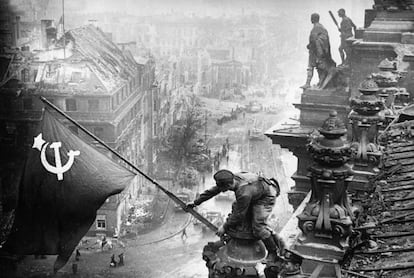
Precisely for this reason, if there’s one date to which historians have returned intensely in recent years, in search of possible lessons for the present, it is January 30, 1933, when Adolf Hitler came to power and, within a few months, the Nazis destroyed the Weimar Republic, one of the periods of greatest liberty in 20th-century Europe, symbolized by, among others, the painter George Grosz and his portrait of street life in 1920s Berlin. 1933 Syndrome, by Siegmund Ginzberg; Weimar. Uncertain Times, a graphic novel by Martín, Pedragosa, and Morata; or the magnificent recent exhibition at Madrid’s Caixa Forum on the ephemeral German Republic, Uncertain Times, are just a few examples of an avalanche of new releases about that sinister period.
All of these, in one way or another, attempt to answer the same question: How could it have happened? How could one of the most cultured, civilized, and thriving countries in Europe have fallen, with the applause of the majority, into the hands of a savage, racist, and antisemitic tyrant, who would ultimately be responsible for the deaths of millions of people? In his latest book, Les irresponsables. Qui a porté Hitler au pouvoir? (The Irresponsibles. Who Brought Hitler to Power?), French expert on Nazism Johann Chapoutot reflects on the economic and political powers that brought the Nazis to power and underlines the enormous collective responsibility. But the chapter dedicated to that date by historian and journalist Volker Ullrich in his latest book, Fateful Hours: The Collapse of the Weimar Republic, is particularly disturbing, revealing the recklessness of many of those who lived through that moment, including some Jews, who trusted in institutions that proved incapable of stopping tyranny. Looking at the present, at the United States under Trump, Hungary under Viktor Orbán, and all the countries threatened by the far right, reading the vision of contemporaries is chilling.
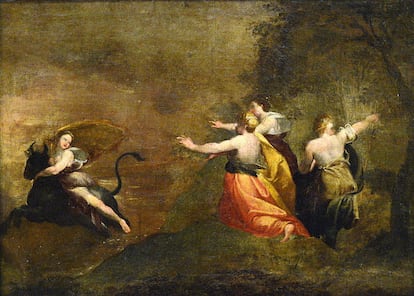
“To fuss over Hitler becoming chancellor strikes me as so childish that it could be reserved for his followers,” wrote Hamburg native Nikolaus Sieveking. Vice-Chancellor Ewald von Kleist-Schmenzin considered: “In two months, we will have cornered Hitler to the extent that he will be unable to do anything but complain.” Even Sebastian Haffner, author of History of a German, recounted that, faced with the feeling he had about Hitler — “a smell of blood and filth surrounding that man” — his father, a liberal educator, thought: “He would certainly cause some misfortune, but it wouldn’t last long.” All this nonchalance contrasts with the Nazi dictator’s own words, who, as Ullrich recalls, had never hidden his intentions: “To completely eliminate the Weimar system, ‘exterminate’ Marxism, and ‘expel’ the Jews from Germany, by whatever means necessary.” Very few believed he was capable.
But the continent’s history is also full of dates that look to the future. First and foremost, in the spring of 1945 when Nazi Germany was defeated — which Ullrich himself analyzes in detail in Eight Days in May: The Final Collapse of the Third Reich. In a very short time, the great European powers decided to share economic resources instead of fighting over them in an endless cycle of war. Europe Day is celebrated on May 9, a date that commemorates the year — 1950 — in which the Schuman Declaration laid the foundations for cooperation on the continent. A civic demonstration has been called for May 11 in Madrid in defense of European values.
No book chronicles that stellar moment for humanity when Europe overcame its past like Postwar: A History of Europe Since 1945, the great classic by Tony Judt. The title of its final chapter, “Europe as a Way of Life,” encapsulates the sense of security many citizens feel knowing they belong to this continent, even though it’s very difficult to stop looking back. “In Europe, the threat of history arose not from a deliberate distortion of the past for fallacious purposes, but from nostalgia,” writes Judt in a book whose substance the reader never fully grasps.
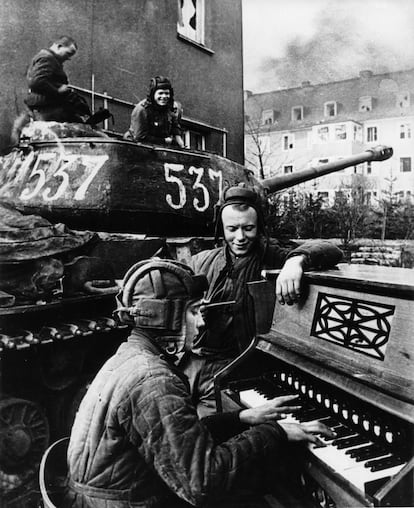
It’s also inevitable to think of the night of November 9, 1989, when the Berlin Wall fell. However, in his excellent book Homelands: A Personal History of Europe, Timothy Garton Ash chooses another date in that push toward freedom that marked the end of the 20th century: March 11, 1985, when the USSR elected a new leader, a then-virtually unknown Mikhail Gorbachev. “The decisive role of individual figures in history was demonstrated by a system whose ideology insisted that it was large, impersonal forces that made history,” writes the British journalist and historian. In Free: Coming of Age at the End of History, Lea Ypi has crafted one of the most entertaining and moving — though also harsh — stories of what it meant to live in the communist world and of the end of the fault line that divided the continent in two. She describes the surprise she experienced on her first trip to the other side of the Iron Curtain: “Some children laughed at me because I didn’t know a mouse who, apparently, was very famous: Mickey.”
Looking back, there are other key dates on the long road to democracy. In her new book, D’où nous venons. Ce qui nous unit, ce qui nous divise (Where We Come From. What Unites Us, What Separates Us), Géraldine Schwarz, author of that wonderful essay on Europe entitled The Amnesiacs, travels back to June 15, 1215, “when a group of English barons, tired of the king’s abuses, particularly prosecutors, occupied London and forced the monarch to sign the Magna Carta, which limited his own powers.” For the first time, the Magna Carta guaranteed something that Donald Trump is consistently flouting with his migrant deportations: habeas corpus, the right to contest one’s own detention before a judge. The tree under which that document was signed still stands today, the thousand-year-old yew of Runnymede, on the banks of the Thames, which has become — like Beethoven’s Ode to Joy, Cervantes’ Don Quixote, or Victor Hugo’s Les Misérables — a symbol of the deep roots of the freedoms that European citizens have managed to wrest from tyrants over the centuries.
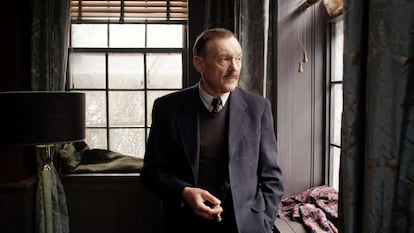
Between 1724 and 1725, Johann Sebastian Bach composed “his cycle of chorale cantatas, the most ambitious of all his projects,” writes Christoph Wolff in Bach’s Musical Universe. This is not just one of the peaks of European culture; rather, to a large extent, the works that the Eisenach maestro composed for Lutheran worship may embody the definitive end of another sinister moment in European history: the Wars of Religion, which devastated the continent in the 16th and 17th centuries. Although the Peace of Westphalia was signed in 1648, a treaty that paved the way for religious freedom and multilateralism, the conflicts continued until the end of the 17th century. Jérémie Foa, an expert on the Wars of Religion, has published Survivre, a history of how the religious massacres that shook France affected every level of society, from Michel de Montaigne’s sleepless nights, when he thought he could be killed at any moment, to their influence on language. “In civil wars, language becomes opaque, it loses its effectiveness as a transparent vehicle,” he wrote. Under Bach’s genius, that seemingly endless conflict became a form of beauty that the world’s greatest Baroque musicians continue to perform, and art once again flowed as a form of communication.
They were naturally there on July 14, 1789, the day of the storming of the Bastille — although, as Éric Vuillard recalls in July 14, the king wrote that day in his diary: “Nothing” — or on March 18, 1871, with the explosion of freedom that the Paris Commune represented. Or on April 14, 1931, when Spaniards became citizens with the birth of the Second Republic. But most of these dates have a dark side: the French Revolution eventually mutated into the terror of Robespierre and the guillotine; the Paris Commune was overthrown by savage repression — celebrated in one of Europe’s ugliest monuments, the Sacré Coeur basilica in Paris — and the Second Republic was annihilated by a bloody fascist coup d’état. It took Spaniards 40 years to recover lost freedoms.
The French historian Olivier Wieviorka, a professor at the École Normale Supérieure, has just published the monumental The Total History of the Second World War, a volume of almost 1,000 pages in which he analyzes the conflict from all possible perspectives, in a manner as solid as it is original. For example, chapter 18, “A Racial War,” offers a profound and disturbing look at one of the concepts that unleashed the horror of horrors: the deeply rooted idea that some peoples are superior to others and, therefore, have the right to exterminate them.
His conclusion is both optimistic and pessimistic, the never again of the Auschwitz survivors in the face of the harsh reality of Russian expansionism and the fact that a part of Europe remains trapped in the loop of war. “The Second World War forces us to question humankind, our capacity for adhesion, submission, or rebellion. It forces us to reflect on humanity and its inhumanity, on the rationality of leaders and the true extent of their power,” writes Wieviorka. “The survivors of Auschwitz and Buchenwald responded with a ‘never again.’ War had to be banished, if not from the world, then at least from Europe, and the horrors of the concentration camps would be nothing more than a horrifying memory. However, the Gulag flourished; armed conflicts returned to the Old Continent, first in Yugoslavia and then in Ukraine. No matter how much the great lessons of the interwar period were studied and debated, they never yielded the bitter fruit of experience,” the historian continues. However, it is a fact that Europe managed to move forward into the future, without being swept away by the current into the past.
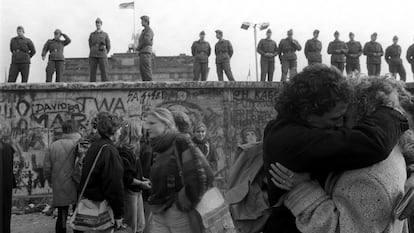
In Homelands, Garton Ash chooses a book that symbolizes all those comings and goings between the Europe of freedoms and the Europe of tyrannies, between hope and terror, between a future both dazzling and dangerous and a past full of lessons we refuse to learn. It is, naturally, The World of Yesterday, by Stefan Zweig. Garton Ash recalls one of the crucial quotes from that masterpiece: “I never loved that old earth more than in those last years before the First World War, never hoped more ardently for European unity, never had more faith in its future than then, when we thought we saw a new dawning.” Along with Zweig, another author has become the symbol of European humanism and the will to build a better world with words: Albert Camus. In his Nobel Prize speech, the author of The Stranger declared: “Each generation doubtless feels called upon to reform the world. Mine knows that it will not reform it, but its task is perhaps even greater. It consists in preventing the world from destroying itself.” These words were spoken in 1957. Now, in this fearful year of 2025, they are more valid than ever.
Sign up for our weekly newsletter to get more English-language news coverage from EL PAÍS USA Edition